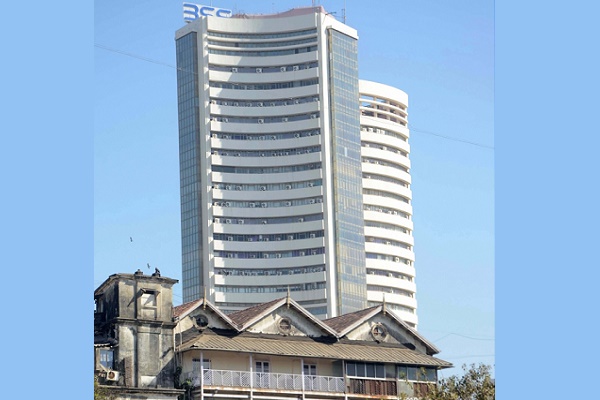IPO Note - Suryoday Small Finance Bank Ltd By Yes Securities

Suryoday Small Finance Bank
IPO Price Band Rs303-305 - Post-issue Market Cap Rs32bn - Valuation 2.1x P/ABV
To comply with the regulatory listing requirement, Suryoday Small Finance Bank (SSFB) is coming out with an IPO of Rs5.8bn which comprises a fresh capital raise of ~Rs2.5bn and an OFS of ~Rs3.3bn.
SSFB started operations as an SFB on January 23, 2017, before which it operated as an NBFC-MFI. Its gross loan portfolio (GLP) has witnessed a CAGR of 35% from Rs17.2bn as of FY18 to Rs39.1bn as of 9m FY21. Growth in the current year has been significantly impacted by Covid and 9m FY21 disbursements were down ~50% yoy. Microfinance loans (70% of GLP), CV finance (9%), Affordable Housing Loans (6%), Secured BLs (4%) and NBFC loans (5%) are key products. Since becoming a bank, the deposits have been ramped up to 88% of advances (FY18-9m FY21 CAGR of 72%). Cost metrics has been controlled through addition of moderate-sized banking outlets, calibrated employee addition and lower average cost of employees. The bank delivered RoA/RoE of 3.2%/14.8% and 2.5%/11.3% in FY19 an FY20 respectively, but its profitability has been significantly impacted by Covid in the current fiscal. The aforesaid capital raise will lift Tier-1 ratio above 50%.
We do not have a positive view on this issue premised on following reasons…
Asset quality severely impacted by Covid; overall stress inadequately addressed
* SSFB’s proforma Gross and Net NPLs (adj. for Covid buffer) stood at 9.3% and 3.7% respectively as of Dec 2020. Besides this, the bank is likely to have a substantial portfolio in PAR 30-90 bucket which can be construed from the trends in paying customers (82% in Dec & 68% in Sept) and overall collection efficiency (111% in Dec & 77% in Sept).
* The above collection indicators are significantly lower in the states of Maharashtra and Tamil Nadu which together contribute 60%+ of SSFB’s GLP. Notably, other MFIs and SFBs under our coverage have reported significantly better collections in these states and for same products.
* To diversify its asset franchise, the bank has aggressively grown its portfolios of CV loans, Secured BLs and FIG (smaller NBFCs/MFIs/HFCs). In these segments, the growth was substantially driven by ramping-up the ticket size (ATS CAGR of 29%/61%/87% for CV/SBL/FIG over FY18-9m FY21). This will be the first adverse credit cycle for these products.
* Considering a moderate Covid buffer and likelihood of PAR 90 increasing in the near term, the credit cost could remain elevated for the next couple of quarters and thus weigh on bank’s profitability.
Not so credible loan assets diversification
* Just like USFB, SSFB has somewhat struggled to deliver a credible asset diversification. Microfinance was 76% of GLP as of FY20 (has come down to 70% now due to much shorter tenor of these loans).
* High ticket size of CV loans at Rs2mn+ and lower yields at near 10-11% suggests portfolio of new CVs and mid-sized fleet operators. It represents a low-spread diversification
* In FIG portfolio, not only the ticket size has increased substantially, the portfolio yield has ranged 11-14% representing moderate risk undertaken.
* In Secured BL, while ATS is palatable at around Rs2mn, the average tenor of loans at near 10 years is unusual.
Limited success on CASA mobilization and in reduction of funding cost
· CASA deposits at 13% of Total Deposits and 7% of Total Assets much lower than ESFB (25% & 17%) and AUSFB (23% & 14%) reflects measured franchise investments in Branch Banking, Liability Team, Branding, Digital Channels, etc. This along with not-so-credible asset diversification explains the restraint on cost ratios demonstrated by the bank thus far
· Relying heavily on retail TDs by offering higher pricing, the cost of funds for the bank has been coming down relatively slowly and it remains much higher than other SFBs (80-100 bps higher). This hinders a low-risk asset diversification.
Profitability higher than other SFBs, but subjected to high volatility
* With microfinance as the mainstay business and the bank yet to develop a resilient and sustainable proposition in most other segments, the profitability would remain subjected to high volatility.
* Structurally, NIMs and cost metric could deteriorate if the bank were to establish a solid deposit and asset franchise. Also, ramping-up of leverage would depress RoA towards a more stable trajectory.
IPO valuation at par with listed stronger franchisees like ESFB and USFB - when adjusted for franchise and execution capabilities, it becomes unattractive
SSFB’s IPO pricing at 2.1x current P/ABV (post-money) is at par with listed larger peers, ESFB and USFB. However, considering the gaps in the franchise and execution capabilities (management depth), we believe that IPO valuation is relatively unattractive. SSFB does not face any regulatory overhang (no promoter holding co. and promoter shareholding well below 40%) like ESFB and USFB, but the latter can hope for respite with a recent RBI’s Internal Working Group report discussing harmonization of guidelines (convergence to new guidelines) and a non-mandatory NOFHC structure if there is no other group entity and allowance for reverse merger in such cases.
Above views are of the author and not of the website kindly read disclaimer




















